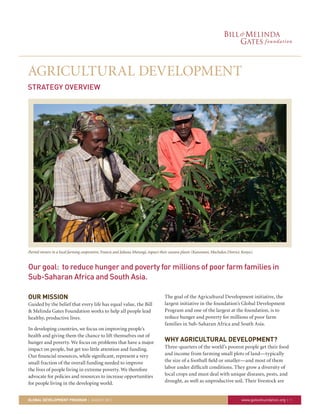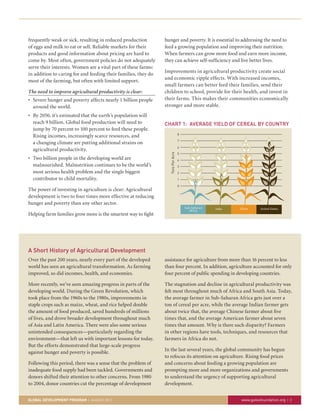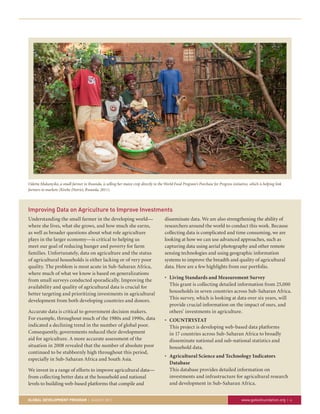The document discusses the Bill & Melinda Gates Foundation's Agricultural Development strategy, which aims to reduce hunger and poverty for millions of small farm families in Sub-Saharan Africa and South Asia. It focuses on helping small-scale farmers increase their productivity and incomes through improved seeds, tools, farming techniques, market access, and policies. It emphasizes the importance of including women farmers, who make up a large portion of the agricultural workforce but face significant constraints, in these efforts to maximize their impact on nutrition, food security and economic development.









